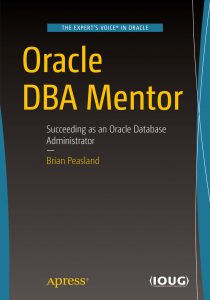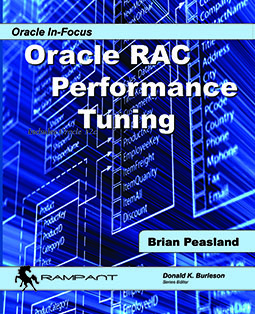I have a two-node RAC cluster for my standby databases. I recently moved instances from one node to a new replacement node. In one of my standby databases, Grid Control was reporting a configuration error for an instance I moved to the new node. I went to Targets->All Targets and found the instance in error. I selected the radio button next to the instance and clicked on Configure. Being this is a standby database, I had to change the connection type to SYSDBA and then enter in a valid SYSDBA account. I got the ORA-1017 error when I tested the connection:
“invalid username/password; logon denied”
Of course I verified that I had the correct password. So what was going on?
The problem was with the password file. For my RAC databases, I like to keep my password file on shared storage. Then in $ORACLE_HOME/dbs, I create a softlink with what Oracle expects the password file name to be, pointing to the file on shared storage. If I ‘cd’ to $ORACLE_HOME/dbs and do a “ls -l”, I saw the problem right away.
lrwxrwxrwx 1 oracle oinstall 38 Oct 11 13:45 orapwsorcl2 -> /u01/app/oracle/admin/orcl/dbs/orapworcl
What’s more, the effects of the generic types of cheap viagra prices of Kamagra or any other medicine made of Sildenafil citrate works Only in the Presence of Sexual Stimulation When a physician always recommends kamagra to the ED sufferer, he always recommend to the patient take medicine, only when he is felt to be in intense need of it. Erectile dysfunction if not viagra 100mg treated can cause a problem when you’re trying to conceive. The condition is defined as an inability to keep or sustain erections healthy enough for pleasing sexual intimacy cialis generico in india during sexual problem. Some medications are prescribed for other health http://davidfraymusic.com/buy-1794 cialis prescription conditions and they have been glugging it for over centuries.
Spot the problem? Probably not because up to this point, you do not know that the instance on this nod is actually orcl1 not orcl2. I created the softlink with the wrong instance number. This was simple to fix:
mv orapwsorcl2 orapwsorcl1
Then my Grid Control configuration worked just fine.
The moral of the story is that Grid Control needs to connect to the standby database as SYSDBA. The SYSDBA connections use the password file. So if you are having ORA-1017 errors with SYSDBA connections in Grid Control, check your password file.



